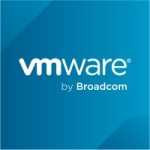We mostly use Microsoft Hyper-V in our production environment.
I find that most of the competition is more or less the same. However, Hyper-V is, when you compare it to the older platforms like VMware, a little bit more advanced at this stage.
I like the System Center part of it, the System Center VMM, where you can manage all the stuff together in the orchestrator and those kinds of things. That was not really available when we looked at Proxmox and other options.
Microsoft's got the better deployment tools like MBT and conflict manager, which is not in the other platform.
For me, the initial setup was very easy.
The solution has been very stable.
The scalability on offer is good.
It's hard to compare it to other solutions. Everything has almost the same offering.
It's possible that more deployment tools might make it a bit better.
If a person has never implemented the solution before, they might find the process difficult.
The next generation should at least include most of the tools of the next operating system.
I've been using the solution from the start. I likely started using it around 2006. It's been well over a decade. I've used it for many, many years at this point.
The solution is very stable. There are no bugs or glitches. It doesn't crash or freeze. It's reliable.
The product is scalable. If a company needs to expand it, it can do so.
The initial setup was very simple in my case. I've got a certification, so for me, it's almost like second nature. For someone with less experience, it's possible it may be a bit difficult.
I am able to handle the implementation myself. I do not need an integrator or consultant.
We did look at Proxmox and Citrix Hypervisor, among other solutions.
I'm just a customer and an end-user.
I'm using the 2012 and 2016 versions of the product.
I'm more familiar with Hyper-V and with Microsoft products. I've got certification in that as well. There are some management solutions out from Microsoft, which are not just for Hyper-V, but for a lot of things. With these, it's almost like an all-in-one product, which you don't really get when you look at your Linux-based virtualizers. For example, with Proxmox, there is not really management. You have these notes that you couple up and then you have a backup server, however, you don't really have something that you can orchestrate those things with. Citrix, I can't speak to as I didn't really work with Citrix that much.
If you run any kind of network solution, I would rather recommend Hyper-V over any other hypervisor at this moment - unless you are looking at it from a cost of ownership perspective.
I'd rate the solution at an eight out of ten. There's no such thing as a perfect product, however, I'm pretty happy with this.

















